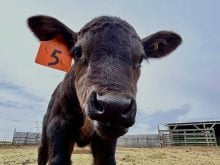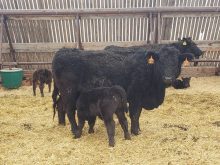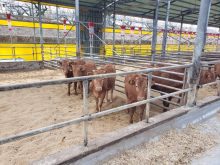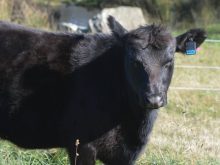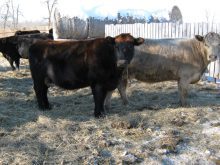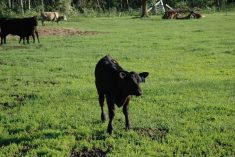Since April, I’ve had the privilege to criss-cross the Prairies to witness the opposite effects of drought and continuous rainstorms upon hundreds of square miles of pasture. In some areas, the pastures were brown, short and by themselves didn’t produce enough feed to support cattle, while other regions were green, lush and had lots of tall grass.
Going into this fall, there is a general decline in mineral content in both types of pastures. That is why we should put the cow herd on a well-balanced mineral (and vitamin) program that maintains or builds up good mineral status in the early fall until the first snowflakes arrive.
Read Also

Harvest wraps up and fall work begins
At the Eppich famly ranch in western Saskatchewan, the fall harvest was successful with few breakdowns, cows and calves have been sorted and a new tractor has arrived
Just because these beef cows are in the early gestation stages and their weaned calves might be gone doesn’t mean that they should ever be deprived of a sound mineral program. Granted, their NRC mineral and vitamin maintenance (and production) requirements are relatively low in the fall compared to other times of the year, but this need increases continuously until the average cow calves and then dramatically increases again until the breeding season. Some research also suggests gestating cows at this time of the year actually need more minerals and vitamins than previously thought for general fertility or future follicular development and for subsequent ovulations that are prepared months ahead of the next calving season.
In a typical autumn, grazing beef cows also experience a lot of stress that requires a mineral/vitamin-driven immune system to maintain good health and fight disease. Cattle are subject to outside weather changes, from typical temperature swings (during the night and daylight hours) to occasional chilling rains.
They also still have to contend with the onslaught of biting-flies and mosquitos until the first frost, and let’s not forget the week or so of fall weaning stress that most of them have to deal with when the maternal bond is broken between cows and their bawling calves. More university research proved that cattle subject to such stresses have much higher cortisol-hormone levels that reduce good immune function against disease, which is further compromised by inadequate mineral status.
Mineral deficiency issues
I have heard of many producers that provide no extra mineral nutrition than a few salt-blocks on pasture, only to treat several cases of foot rot among their beef cows during the fall. I speculate their hooves tend to be soft and pliable on either wet or dry pasture, which allows the foot rot bacterium called Fusobacterium necrophorum to enter deep scrapes or cuts within the inter-digital space between their claws.
It’s often poor copper and zinc status which is responsible for many of these foot rot and other disease cases. For example, copper plays an essential role in specific white blood cells involved in mitigating a good defence against foot disease, while dietary zinc is involved in T-cell antibody production as well as supports T-cell helper functions and capacity against foot rot invaders. Zinc is also part of biological reactions which harden the structural integrity of hooves.
As a beef nutritionist, I have formulated several well-balanced cattle minerals with complementary levels of calcium and phosphorus to pasture and are heavily fortified with bio-available trace minerals (as well as A, D and E vitamins) such as copper, zinc, manganese and selenium. Fed at 100 grams, they maintain or build adequate mineral status, so beef cows can remain fertile, and cope with the stresses during fall.
Feeding such a well-formulated cattle mineral to beef cows is only part of assuring mineral status, which should go hand-in-hand with good mineral management. This means cattle producers should invest in durable mineral feeders such as those plastic mineral feeders with two or three compartments and covered by a rubber flap. They should fill them with cattle mineral about every three to four days, assuming old hardened mineral is first removed. It is also recommended to locate portable mineral feeders where cattle visit frequently. Moving mineral stations closer to water sources generally increases mineral intake by cows, while moving them farther back from the water often decrease mineral intake.
My advice is sound. As the leaves turn colour and fall off the trees, put early gestating beef cows on a good mineral-feeding program, namely:
- Feed 100 grams of a well-formulated cattle mineral to each cow, daily.
- Pour it in a durable mineral feeder.
- Check your mineral feeders every few days. As a result, good mineral status of these beef cows is assured to promote continuous good fertility and health.




